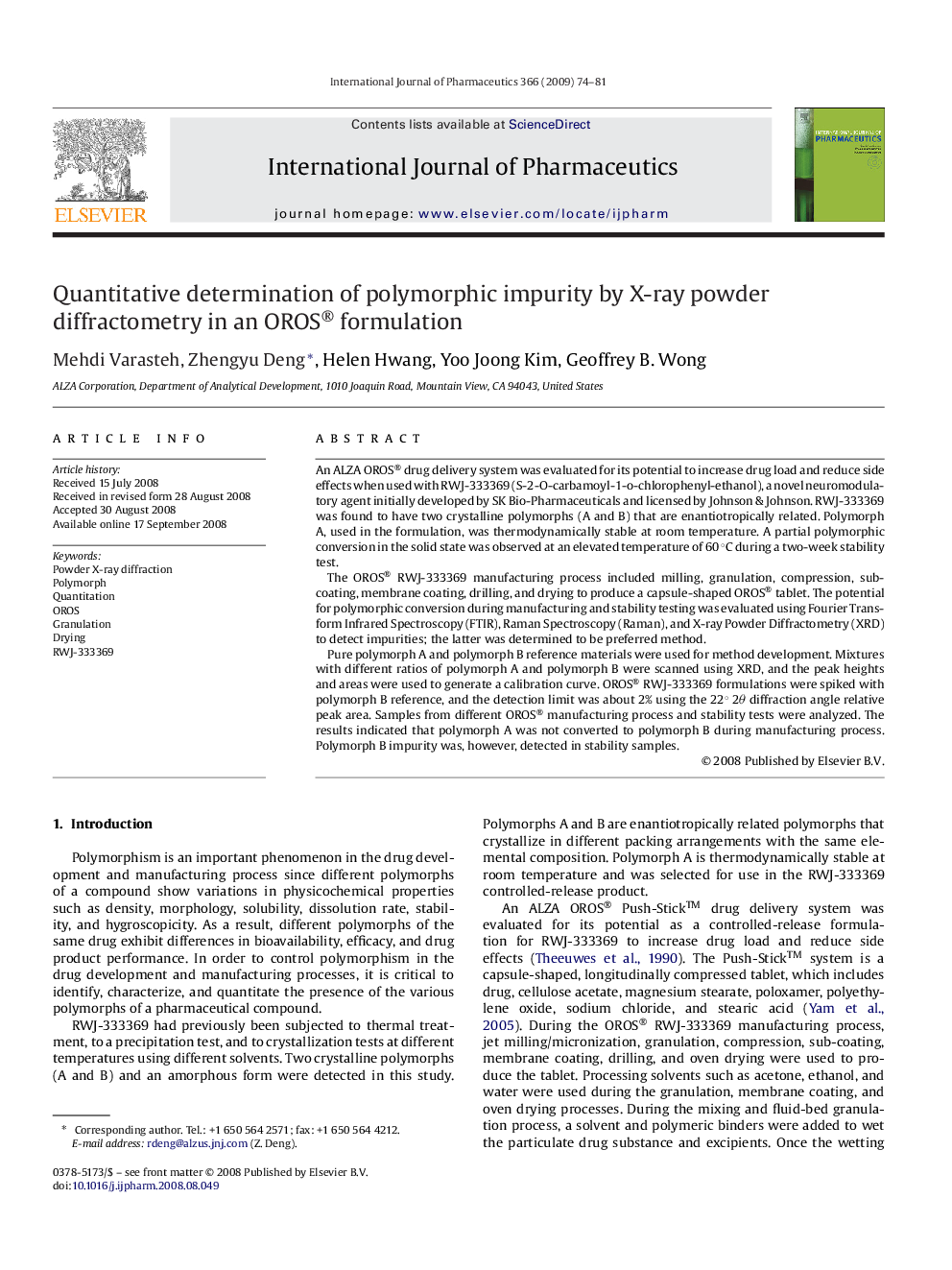| Article ID | Journal | Published Year | Pages | File Type |
|---|---|---|---|---|
| 2505168 | International Journal of Pharmaceutics | 2009 | 8 Pages |
An ALZA OROS® drug delivery system was evaluated for its potential to increase drug load and reduce side effects when used with RWJ-333369 (S-2-O-carbamoyl-1-o-chlorophenyl-ethanol), a novel neuromodulatory agent initially developed by SK Bio-Pharmaceuticals and licensed by Johnson & Johnson. RWJ-333369 was found to have two crystalline polymorphs (A and B) that are enantiotropically related. Polymorph A, used in the formulation, was thermodynamically stable at room temperature. A partial polymorphic conversion in the solid state was observed at an elevated temperature of 60 °C during a two-week stability test.The OROS® RWJ-333369 manufacturing process included milling, granulation, compression, sub-coating, membrane coating, drilling, and drying to produce a capsule-shaped OROS® tablet. The potential for polymorphic conversion during manufacturing and stability testing was evaluated using Fourier Transform Infrared Spectroscopy (FTIR), Raman Spectroscopy (Raman), and X-ray Powder Diffractometry (XRD) to detect impurities; the latter was determined to be preferred method.Pure polymorph A and polymorph B reference materials were used for method development. Mixtures with different ratios of polymorph A and polymorph B were scanned using XRD, and the peak heights and areas were used to generate a calibration curve. OROS® RWJ-333369 formulations were spiked with polymorph B reference, and the detection limit was about 2% using the 22° 2θ diffraction angle relative peak area. Samples from different OROS® manufacturing process and stability tests were analyzed. The results indicated that polymorph A was not converted to polymorph B during manufacturing process. Polymorph B impurity was, however, detected in stability samples.
